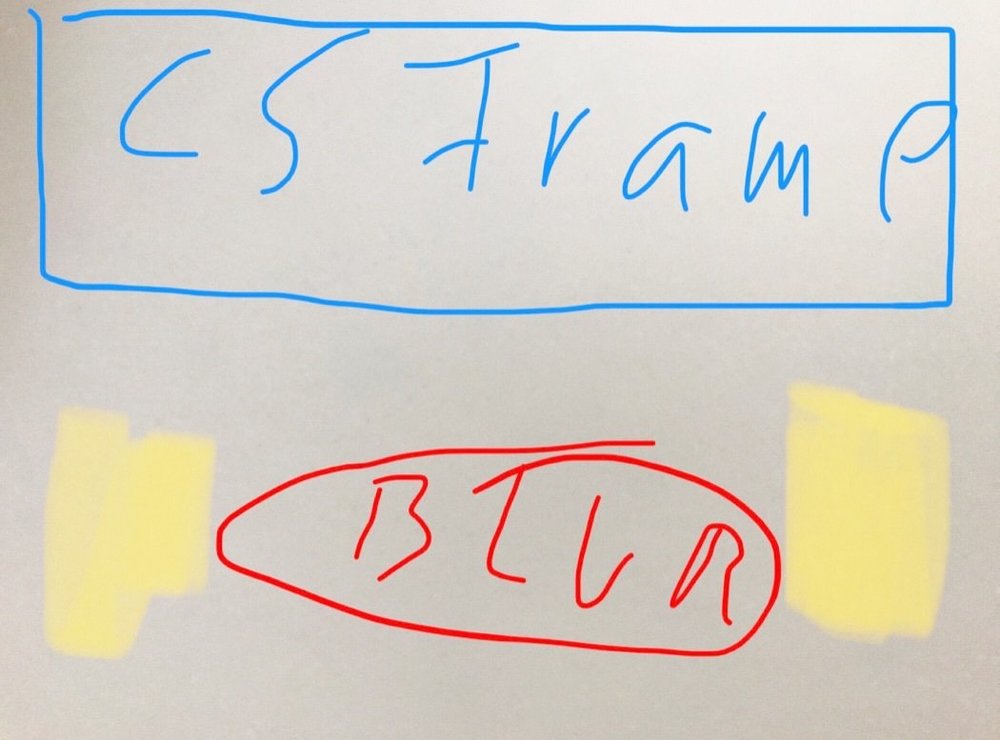-
Posts
422 -
Joined
-
Last visited
Everything posted by Joerg Polzfusz
-
Mr. Nakano‘s old webpage is available on archive.org: https://web.archive.org/web/20190116133837/http://www.nakanocam.com:80/8mm.html Good luck with repairing the camera! When an article isn’t included in the 2019‘s backup, then simply click onto an earlier date, e.g. 2018.
-
The s8wiki’s webserver had to be rebooted as there was a software error. Before this, the s8wiki was down for 3-5 days.
-

Short Ends 40 Cans of Value?
Joerg Polzfusz replied to alex pollini's topic in Film Stocks & Processing
As they have not been stored in a freezer/fridge, the films might have lost one f-stop (or more - was the attic in an airconditioned room?). This might still be interesting for experimental filmmakers or for people on a budget. But I doubt that you will make a lot of money with these films. -

Short Ends 40 Cans of Value?
Joerg Polzfusz replied to alex pollini's topic in Film Stocks & Processing
Edit: please check Fuji‘s/Kodak’s documentation whether 10cm are sufficient to have the full filmtype and year edge information at least once. (Looks like this information is repeated less often than on 35mm still photography films.) -

Short Ends 40 Cans of Value?
Joerg Polzfusz replied to alex pollini's topic in Film Stocks & Processing
Can’t you simply cut off 2x10cm of each mystery film, then process one strip as B&W negative and the other one as ECN2 and then take a look at the edge codes/keycodes of the processed strips? https://www.kodak.com/content/products-brochures/Film/post-production-35mm-keykode-diagram.pdf http://www.theodoropoulos.info/attachments/076_fujifilm_motion_picture_film_manual.pdf Of course you can skip the B&W-reversal test when you are 100% sure that you have never bought Double-X, Kodachrome or other B&W films. -

What is this film used for?
Joerg Polzfusz replied to Daniel D. Teoli Jr.'s topic in Film Stocks & Processing
Thanks for that link! But isn’t it strange that there’s no test material for S8 optical sound?! And I have not seen any test material for anamorphic S8, R8 and 16mm?! I wonder whether there have been test films for 9.5mm as well (maybe at SMPE times)? -
„The only black and white 16mm stocks I've found in London are either Double or Orwo Un54.“ Also selling TriX: https://www.widescreen-centre.co.uk/kodak-16-mm-film.html Also selling TriX and Fomapan R100: https://www.on8mil.com/product-category/8mm-film-packages/16mm-film/ Also selling TriX: https://www.gaugefilm.co.uk/16mm-shop.html
-
Home movies: As you can see on this „lightmeter“ of a camera produced somewhen between 1945 and 1955 in the USA, the average color reversal film had 10 ASA, while the average B&W reversal had 40 ASA. (In fact, I would assume that the average B&W would have been 25 ASA.) That’s why most home movies of that time had very little visible grain. Steadiness of the image: you can assume that the majority of the camera owners knew how to hold a camera steady (and how to use a monopod or tripod). The main reason why films of that era are assumed to be „shaky“ is because of film damages (after being projected several times per year over decades) and shrinking filmstocks. But when new, they should have been very steady. Sharpness: The majority of the camera owners knew how to properly focus. However, a large number of cameras only had fixfocus primes. (You can emulate this by permanently setting your lens to 6m.) Exposure: The majority of the cameras didn’t have any autoexposure. Hence, you needed an external lightmeter or a table like the one on the Revere. When starting the scene, the exposure was most likely spot on. But when moving the camera (e.g. panning), there was no easy way to adjust the iris accordingly. Lens flares: At least 50% of the cameras had cheap lenses (=uncoated lenses). No zoom: In the 1940s, there had been no zoom lenses. The closest thing an amateur could afford was a camera with a lens turret for three different prime lenses. Good luck!
-
Hi! Newsreels: 35mm and 16mm (most likely in this order) Homemovies: 9.5mm, Double8 and 16mm (most likely in this order) Filmstocks in the 1940s in London? During WWII or after WWII? During WWII: most likely only Ilford and Kodak, maybe some DuPont, 3M or Gaf After WWII: same as above plus most likely also Agfa West and Agfa East (=Orwo), Ferrania, Gevaert, Pathé, maybe even Fuji
-

Nikon to Acquire US Cinema Camera Manufacturer RED
Joerg Polzfusz replied to Jeremy Saltry's topic in Cinematography News
The biggest question is: Will RED stay a separate company that is only owned by Nikon (to prevent further lawsuits)? Or is Nikon going to force RED to produce more prosumer products (action cameras, something similar to the blackmagic pocket, …)? Or will Nikon force RED to sell their future products under the Nikon brand (so that they can rival e.g. Canon‘s C300)? -

Shooting Color Neg for B&W
Joerg Polzfusz replied to Frank Poole's topic in Film Stocks & Processing
Here, you can find a few details about the used lenses etc.: https://www.studiodaily.com/2012/02/the-artists-cinematographer-speaks/- 12 replies
-
- 16mm
- color negative
-
(and 3 more)
Tagged with:
-

Shooting Color Neg for B&W
Joerg Polzfusz replied to Frank Poole's topic in Film Stocks & Processing
They’ve shot „The Artist“ on Vision3. The desaturation was done in post. The prints are in B&W (on color print stock): https://m.imdb.com/title/tt1655442/technical/?ref_=tt_spec_sm- 12 replies
-
- 16mm
- color negative
-
(and 3 more)
Tagged with:
-

Les Bosher - Anyone been in touch lately?
Joerg Polzfusz replied to Alexander Boyd's topic in General Discussion
Thanks, my mistake, sorry - even according to the German forum, Les Bosher is still alive. But I missed this information as it was posted a week later in a very long thread. -

Les Bosher - Anyone been in touch lately?
Joerg Polzfusz replied to Alexander Boyd's topic in General Discussion
Hi! According to some German forums, Les Bosher died several years ago. But I don’t know whether this is true as his webpage is still up. -
Hi @Tyler Purcell, I was referring to John‘s quote as it reminded me of Ignacio’s tests done with a Wolverine MM Pro: Do you notice how the frame moves up and down (and also left and right)? So the scanner could be another cause for a bad result.
-
Was this scanned on a Winait aka Wolverine aka Somikon aka reflecta aka Kodak aka dozens of other names? Then it’s definitely the scanner‘s fault.
-

Stitch shot inside to outside car
Joerg Polzfusz replied to John Russell Schmidt's topic in Visual Effects Cinematography
Contains a scene where the camera moves from outside the car onto the back seat - starting at approximately 26 seconds. -

Stitch shot inside to outside car
Joerg Polzfusz replied to John Russell Schmidt's topic in Visual Effects Cinematography
This is also done in „Two Tars“ (1928). But the Hal Roach Studios have been cheating a little bit by using a convertible with opened hood. ? -
I would assume that some assistant simply moved a glass with some grease on it up or down… -> see attached image: Initially, you can see everything in focus, as you start with the blue part in front of the lens. Then the glass got moved up, with everything except for yellow parts being out of focus because of the grease… (Other than this, I would guess that it’s a composition of a scene shot in front of a blue/green screen with a blurry scene.)
-
Another link: https://www.keh.com/shop/repair
-
Google also popped up this link: http://www.spectracine.com/repair.html
-

Shooting plates for a floating flower
Joerg Polzfusz replied to Robert Keyes's topic in Visual Effects Cinematography
Hi! As the flower will be something like 2m away from the drone’s camera, while the background is something like 50m away, you will not be able to shoot this „in camera“ when you both have to be sharp. (Depth of field etc.) As flowers tend to shake/quiver/„whatever is the best English term“ very fast when getting transported, I would try to shoot the flower in front of a green screen at 120fps. This should turn any quiver into a „smooth movement“ when combined with the aerial shots. (Not to mention that both will be in focus when needed.) You could simply use an hair dryer or a ventilator to simulate any wind. Is it possible to simply embrace the fact that you cannot get it done properly by having an artist drawing some cartoon style flower for the aerial sequences and then have the cartoon flower getting morphed into the real one later? -

8mm Print edge code information
Joerg Polzfusz replied to Andrew Hamilton Watts's topic in Film Stocks & Processing
Looks like the dot in „safety film“ indicates the production plant and not the year (not to mention that the dot is hidden by a perforation hole on my above photo): http://www.film-tech.com/ubb/f1/t011524.html More links to information about Kodak‘s edge codes: http://www.filmforever.org/Edgecodes.pdf https://www.kodak.com/content/products-brochures/Film/Guide-to-Identifying-Year-of-Manufacture-for-KODAK-Motion-Picture-Films.pdf





